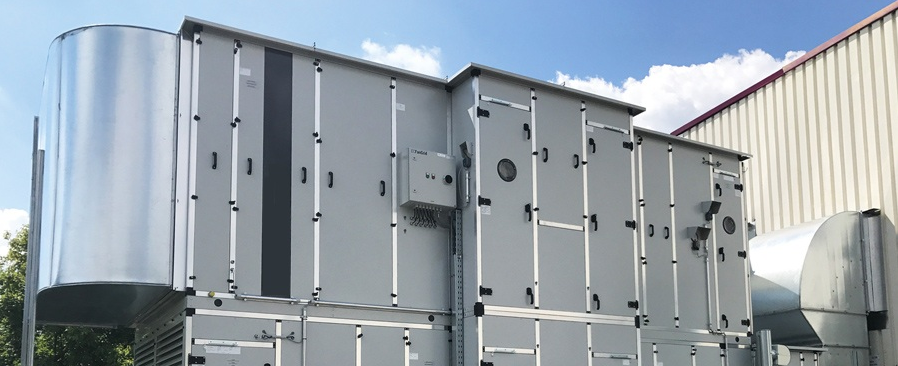Category Focus: Air Handling Units (AHUs)

Air Handling Units (AHUs) are critical elements in HVAC systems, designed to regulate and circulate air within buildings. They are composed of several sections, such as filters, fans, heating/cooling coils, humidifiers, and dampers, each playing a vital role in ensuring optimal indoor air quality and thermal comfort. For HVAC engineers, selecting the correct AHU is a multi-faceted process that demands consideration of numerous technical factors :
- Airflow Rate and Capacity: One of the main characteristics of an AHU is its ability to move the required volume of air, measured in cubic meters per hour (m³/h). HVAC engineers calculate the necessary airflow based on factors like the building’s size, occupancy levels, and cooling/heating loads. Ensuring the correct airflow rate is crucial for maintaining indoor air quality (IAQ) and proper temperature regulation.
- Heat Recovery Systems: Modern AHUs often incorporate heat recovery systems, such as plate heat exchangers, rotary heat exchangers or run-around coils, to enhance energy efficiency. These systems recover waste heat from exhaust air and use it to precondition the incoming fresh air, which reduces the energy demand on the heating or cooling system. Selection of appropriate heat recovery devices depends on the type of building and operational needs.
- Fan Efficiency and Configuration: AHUs rely on fans to circulate air, and selecting efficient fans can significantly impact the unit's performance and energy consumption. Fans can be equipped with variable speed drives (VSDs), allowing the system to adjust its speed based on real-time demand, which further optimises energy use.
- Filtration and Indoor Air Quality: Filtration is critical, especially in sensitive environments like hospitals or laboratories. AHUs can be equipped with different filter grades, depending on the required level of particles removal. HVAC engineers must balance filtration efficiency with pressure drop, as highly efficient filters can increase energy consumption by making fans work harder.
- Noise Control: HVAC engineers must also consider the acoustics of AHUs. Fan noise, motor noise, and airflow turbulence can all contribute to excessive sound levels, which can be detrimental in environments like offices or schools. To mitigate noise, engineers can incorporate sound attenuators or place AHUs in noise-sensitive areas.
Software Solutions
Accurate AHU selection is facilitated by advanced selection software that helps HVAC engineers navigate the complexities of system design. The use of selection software, which are a pre-requisite of ECC certification schemes, allow engineers to configure AHUs by inputting key parameters such as airflow, cooling/heating demand, and filtration requirements, integrating to local energy efficiency. By combining these advanced tools with the latest in AHU technology, users create systems that not only meet performance and comfort requirements but also comply with evolving environmental standards.
Sustainability and Compliance
AHU design increasingly adapts to sustainability criteria, including those in Europe set by Energy-Related Products (ErP) regulations, including (EU) No1253/2014. These are setting minimum energy performance requirements for HVAC equipment, including efficiency thresholds for fans, heat recovery systems, and overall unit energy consumption. Compliance can be verified through market surveillance initiatives.
Understanding and integrating the technical aspects of AHU systems, from airflow mechanics to energy compliance, ensures that HVAC professionals can design efficient, sustainable, and high-performing systems suited to modern buildings.
While the efficiency and sustainability requirements evolve to drive the AHUs market towards more virtuous designs and performances, we as Eurovent and Prodbim remain close to such industry developments, with the goal of guaranteeing to all our participants the highest data accuracy, searchability, interoperability, and compliance.
